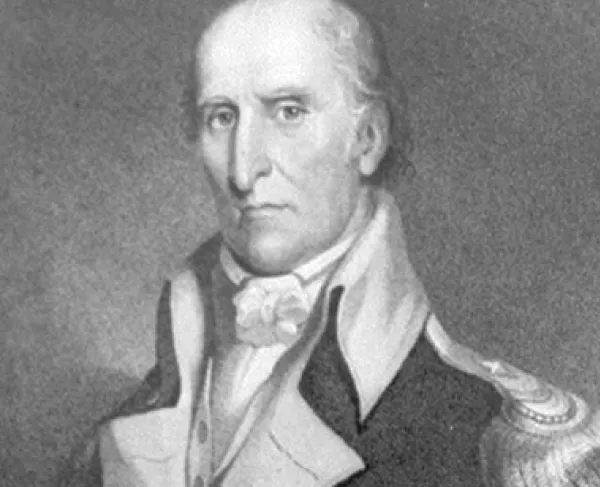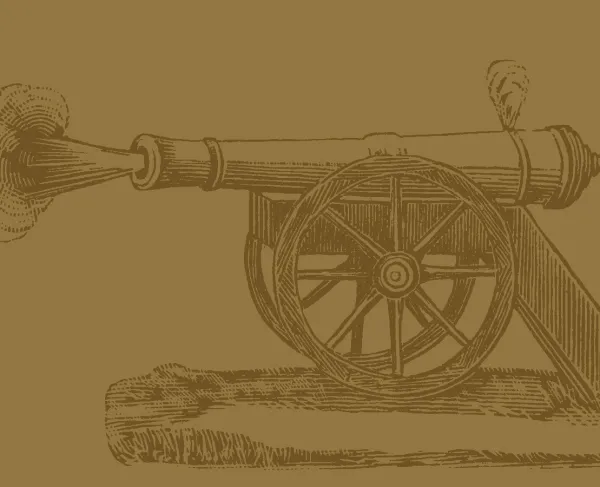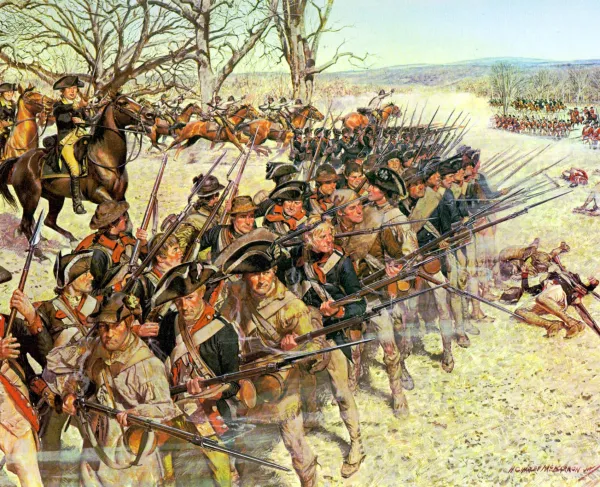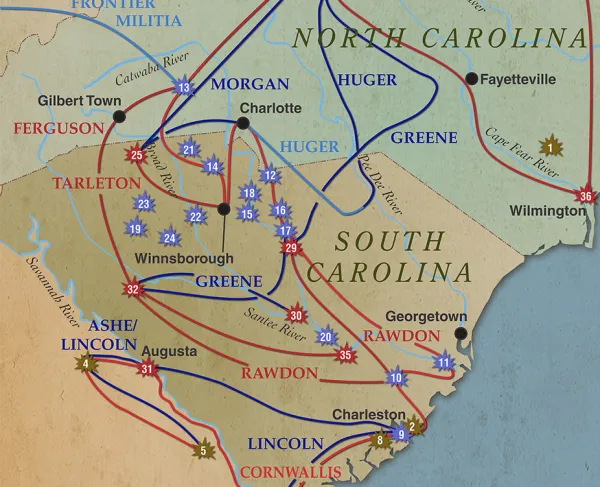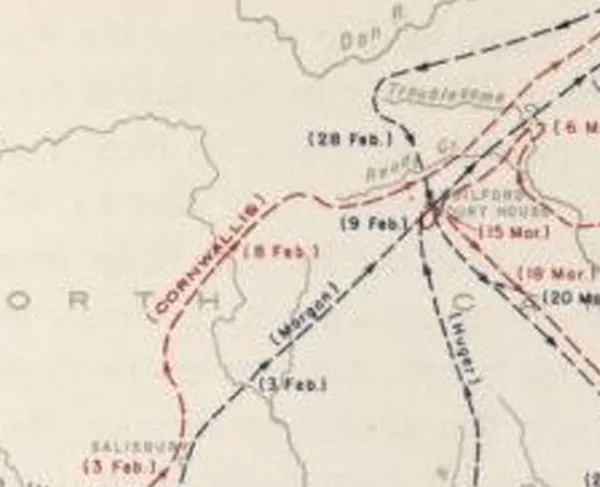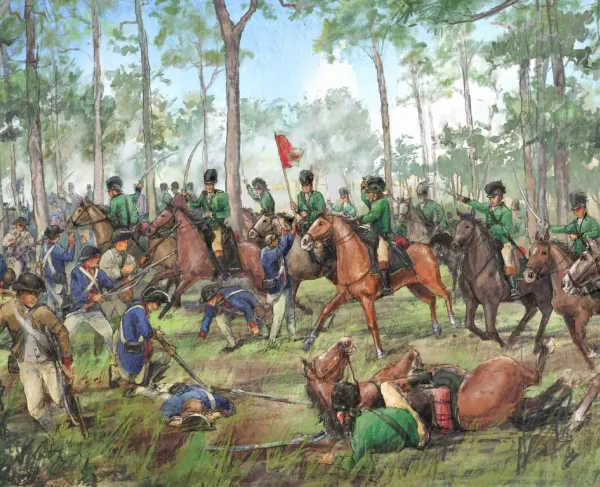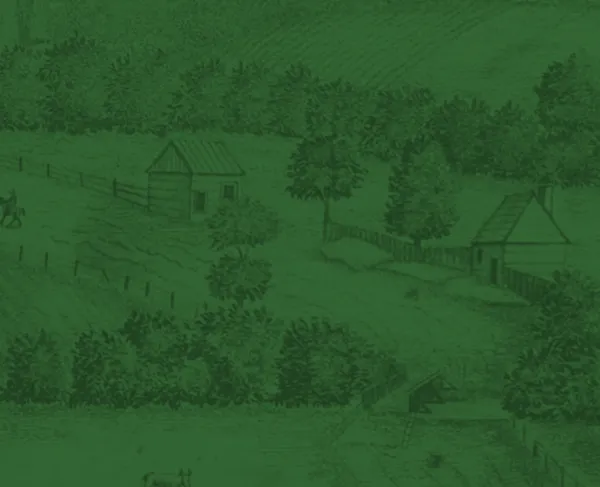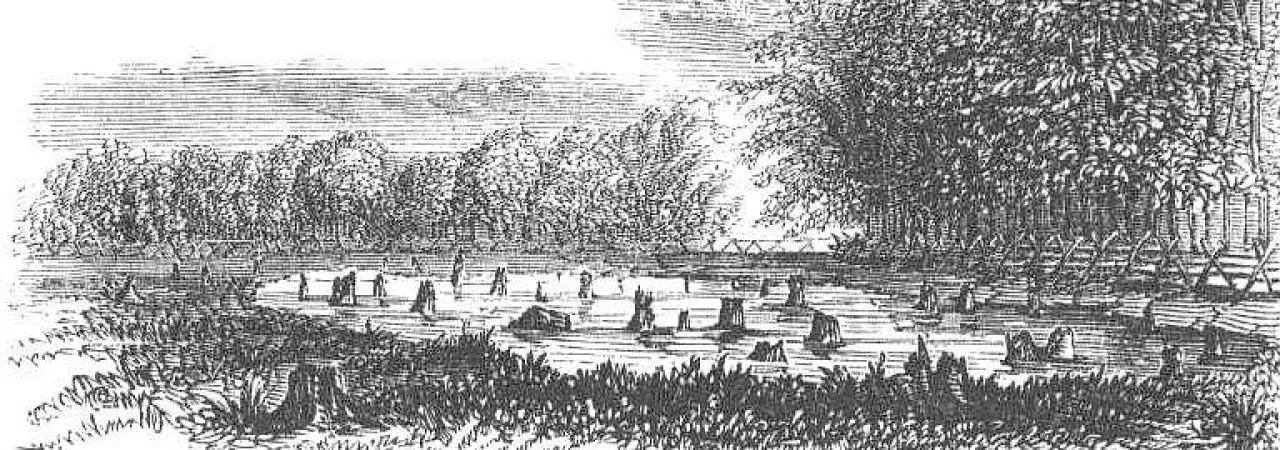
Pyle's Defeat
Burlington, NC | Feb 25, 1781
Pyle’s Defeat occurred on February 25, 1781, when Patriot forces sought to disrupt Tory reinforcements from reaching General Charles Cornwallis and his army in Virginia. When Americans in North Carolina came across a group of Loyalists en route, the Patriots blended into the enemy movements until they were discovered, and a massacre ensued.
How It Ended
American Victory. Although Patriot leader Lt. Col. Henry “Light-Horse Harry” Lee claimed that he only intended to force British surrender, the Patriots overtook the Loyalists and killed nearly 100 men at point-blank range.
In Context
Pyle’s defeat, or “massacre” as it is sometimes known, followed a turning point in the British Southern Campaign. Expecting an enthusiastic outpouring of Loyalist support, the British forces under General Charles Cornwallis penetrated deep into the Carolina backcountry after victories at Savannah, Charleston, and Camden. The tide began to turn against the British after resounding American victories at the Battle of King’s Mountain on October 7, 1780 and the Battle of Cowpens on January 17, 1781.
Pyle’s defeat epitomizes the brutal nature of the American Revolution in the southern backcountry. Here, the Revolution resembled a civil war and local Patriot and Loyalist militias clashed in a series of struggles that ultimately culminated in Cornwallis’s surrender at Yorktown on October 19, 1781.
Following the Battle of Cowpens, Cornwallis decided to march his men north toward Virginia in an effort to cut off the rebellion at the source. The newly commissioned commander of Continental forces in the South, Major General Nathanael Greene, pursued Cornwallis in a race to the Dan River in February 1781. Greene tasked General Andrew Pickens with tailing Cornwallis’s troops, harassing his men, and disrupting their supply lines. Greene successfully reached the Dan River before Cornwallis and sent another officer, Lt. Col. Henry “Light-Horse Harry” Lee, into North Carolina to meet up with Pickens. Together, the two commanders were tasked in preventing Loyalist recruitment in the south.
While on their mission, Pickens and Lee received reports that a British force under Lt. Col. Banastre Tarleton had been spotted moving toward the Haw River in North Carolina. Tarleton had orders to gather and escort Loyalist recruits to the main army. While attempting to thwart Tarleton, Pickens and Lee came across a force of around 400 Loyalists on February 25.
Lee’s legion wore green jackets similar to those worn by Tarleton’s dragoons, and he used this to his advantage. Lee decided to lead his men alongside the Loyalist ranks pretending to be Tarleton. Once Lee reached the leader of the force, Col. John Pyle, a fight broke out for reasons that remain unclear. Most likely, a Loyalist discovered the ruse and attacked. The Patriots overtook the Loyalists with bayonet and musket fire at point-blank range, killing close to 100 men, and wounding and dispersing the rest.
Lee’s victory was a rather contentious one. He maintained that he had no intention of ruthlessly attacking Pyle’s force; rather, he hoped to surround them and force their surrender. Pickens and Lee both claimed to have tried desperately to restrain their men from causing more bloodshed.
1
343
Some Patriots understood Pyle’s Defeat as revenge for Tarleton’s failure to accept the surrender of Americans at the Battle of Waxhaws on May 29, 1780. The British, however, viewed Pyle’s defeat as nothing less than a massacre, as exemplified in Cornwallis’s insistence that Pyle’s force was “inhumanly butchered, when begging for quarters, without making the least resistance.”
Regardless, Pyle’s defeat contributed significantly to the gathering momentum of the Patriot forces in the South, while Loyalist numbers and morale suffered a severe blow. At the Battle of Guilford Courthouse on March 15, 1781, American forces severely crippled the Royal forces by inflicting heavy losses on the British. Over the next several months, Patriot forces in the South held off the British and helped to ensure a British surrender at Yorktown in October 1781.
One British unit, in particular, achieved a particularly nasty reputation for brutality during the Revolutionary War that has yet to fade: the British Legion under the command of Colonel Banastre Tarleton. Tarleton is infamous for his participation in the Waxhaws Massacre on May 29, 1780, where over a hundred Continental soldiers were cut down with sabers after trying to surrender. However, it is unclear that this slaughter intentional since Tarleton was immobilized under a dead horse for much of the battle. Despite this clarification, and despite his British Legion being routinely recognized for their courage and professionalism, the very word "Tarleton" became a byword for cruelty in the final years of the war. In addition, Tarleton’s soldiers consisted of American Loyalists from the southern colonies who had turned on Patriot forces in their communities. Because of these factors, many Patriots in the southern colonies saw Pyle’s defeat as retribution for previous atrocities and the betrayal of their countrymen.
Pyle's Defeat: Featured Resources
All battles of the Southern Theater 1780 - 1783 Campaign
Related Battles
600
400
1
343
